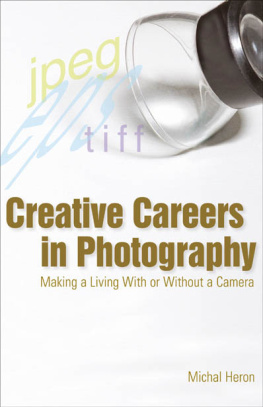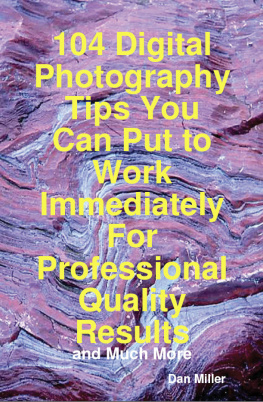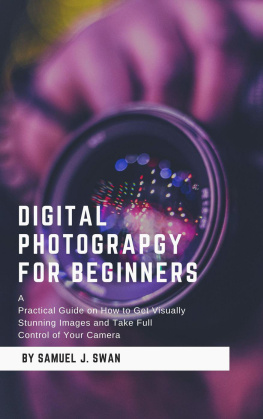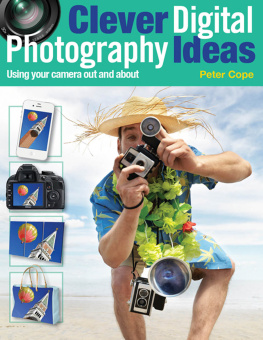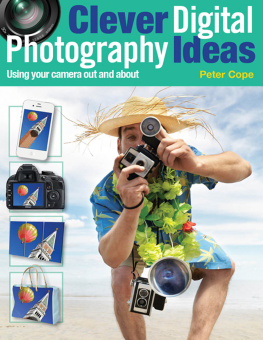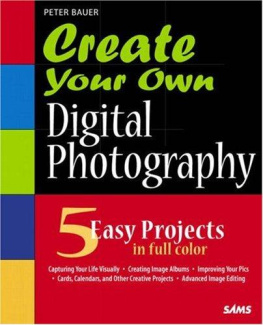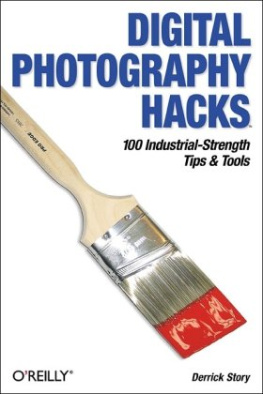Creative Careers
in Photography
Making a Living With or Without a Camera
Michal Heron


Dedication: To my family
Acknowledgements: My great appreciation goes to the generous professionals who were interviewed for this book. Their experience and advice in their profiles provides an invaluable tool for those starting in photography.
The Allworth Press staff, as usual, performed with extraordinary skill, understanding, and patience. Thanks to Nicole Potter-Talling, Derek Bacchus, Michael Madole, Cynthia Rivelli, Katie Ellison, and Tad Crawford.
Finally, I owe a great debt of gratitude to Cynthia Matthews and Helen Marcus for their insightful contributions to this book and for many years of friendship.
2007 Michal Heron
All rights reserved. Copyright under Berne Copyright Convention, Universal Copyright Convention, and Pan-American Copyright Convention. No part of this book may be reproduced, stored in a retrieval system, or transmitted in any form, or by any means, electronic, mechanical, photocopying, recording, or otherwise, without prior permission of the publisher.
10 09 08 07 06 5 4 3 2 1
Published by Allworth Press
An imprint of Allworth Communications, Inc.
10 East 23rd Street, New York, NY 10010
Cover design by Derek Bacchus
Interior design by Mary Belibasakis
Page composition/typography by Integra Software Services, Pvt., Ltd., Pondicherry, India
Cover photo by Jeff Babitz
ISBN-13: 978-1-58115-469-6
ISBN-10: 1-58115-469-0
eBook ISBN:978-1-58115-815-1
Library of Congress Cataloging-in-Publication Data
Heron, Michal.
Creative careers in photography : making a living with or without a camera / Michal Heron. 1st ed.
p. cm. (Creative careers in photography)
ISBN-13: 978-1-58115-469-6 (pbk.)
ISBN-10: 1-58115-469-0 (pbk.)
1. PhotographyVocational guidance. I. Title.
TR154.H47 2006
770.23dc22
2006035276
Printed in Canada
Contents
Profiles with: Stephen Wilkes, Melanie Stetson Freeman, David Seide, Ron Gould
Profiles with: Andy Marcus, Jim Roshan, Joe Slayton
Profiles with: Charlie Walsh & Drew Webb, Carl Leet
Profiles with: Joyce Tenneson, Karen Amiel
Profiles with: John Kieffer, Jim Pickerell
Profiles with: Sanjay Kothari, Jessica Oyanagi
Profiles with: Angela Gottschalk, Jennifer LaFond, Chrissy McIntyre, Karen Amiel
Profiles with: Catherine DeMaria, Sam Willard, Victor Frey
Profiles with: Chuck Delaney, David Walker
Profiles with: Jeff Wignall, Bryan Peterson
Profiles with: Maria Lyle, Tracy Mack-Jackson
Profiles with: Maria Piscopo
Preface
There is an allure, an appeal to photography that defies explanation. It helps us find intimacy with the world; it ties us to places and people in a way that seems almost magical. We are transported by the touch of light on golden fields, stark buildings, or cherished faces present and past.
Historically, in other cultures and other centuries, there was the belief that photography steals your soula concept that may not be so farfetched. At the very least, photography borrows it. When we study nineteenth-century photographs of a sod-hut frontier family or a twentieth-century Dorothea Lange portrait of an impoverished Depression-era worker, we feel the power of that soul coming to us across time.
Photography has an addictive affect once it takes hold of you and can influence and enrich a lifetime.
If you love photographs, and want to find a place in the world of photography, where on earth do you start? For those who are drawn to images, photography often becomes a passion. But when trying to choose a career it can become downright dizzying to face the variety and complexity of ways one can work with photographs.
The purpose of this book is to give you a good look at the array of possibilities available in photography. Its a beginning, an opening of doors to what it means to work in photography. Enjoy the information but dont feel stifled or overwhelmed by the choices. Like a meal that offers too many rich foods, it may seem indigestible. Dont worry that the need to choose an immediate path will imprison you. You may not know right away if what appeals to you now will be satisfying later. As youll see, many, many, many professionals have started in one part of the photographic world and then moved into another. As one colleague put it: Ive morphed myself into several different photographic specialties. Thats not to suggest that one should be a dabbler. Wherever you start in photography, give it your all. Dive in as if it will be your lifetime work, but comfort yourself with this thought: if your first choice isnt right, other opportunities may present themselves as you develop skill and knowledge of the professions.
Next there is motivation to consider. What is your impetus for wanting to enter the world of photography? Glamour, money, creative satisfaction, travel, learning? Are these incentives realistic or illusory? Is it an inspired calling or merely a pie-in the-sky fantasy of a cool way to earn a living? The motivations are many and could be misleading. A good first step is to try to analyze your own interest in photography and reasons for wanting to enter the field.
But maybe you dont know enough yet to fully understand why you like photography or why you are considering it as a profession. Perhaps you just have a yearning for some satisfaction that you think photography can provide. That inclination, that keenness for the visual, is essential to success in every aspect of photography. Enthusiasm and determination will carry you through the hard work and difficulties to a place that suits you in the world of photography. Learning more about the field will help you to sort out a daydream from a genuine attraction to being a photographer.
And its not just working with a camera. Who says you have to be a photographer? Certainly you can pursue that dream. But there are dozens of creative ways to work with photographs that dont require being the person to take them. Many people dont discover the range of fascinating picture jobs aside from being the photographer until theyve spent a few years knocking their heads against the wall. They finally learn that they prefer not to be behind the camera. Leave that pressure to someone else. For example, as a photo editor you get to select from among the great photos available and influence what appears in a publication. Or as a stylist you work on the set as part of a team, in the middle of the creative electricity, but with less of the pressure on your shoulders or gaining the praise or incurring the wrath of the client. Or, as a teacher, youll see delight in the eyes of a student you have inspired with your love of the medium.
The people working in these other non-photographer careers are often referred to as picture professionals. The basic division of this book reflects that distinction between working with or without a camera, but your career doesnt have to be either/or. Lots of people blend a shooting career with one or more of the picture professionsphotography is an intricate but marvelously flexible world. Many picture professionals Ive known didnt start out with that in mind. They yearned to be photographers but got sidetracked into something that suits them as well or even better. Or, as in my case, they started out as a picture professional (photo editor) and were inexorably attracted to the pleasures of doing the photographyand jumped into the cold waters of being a freelance photographer.

